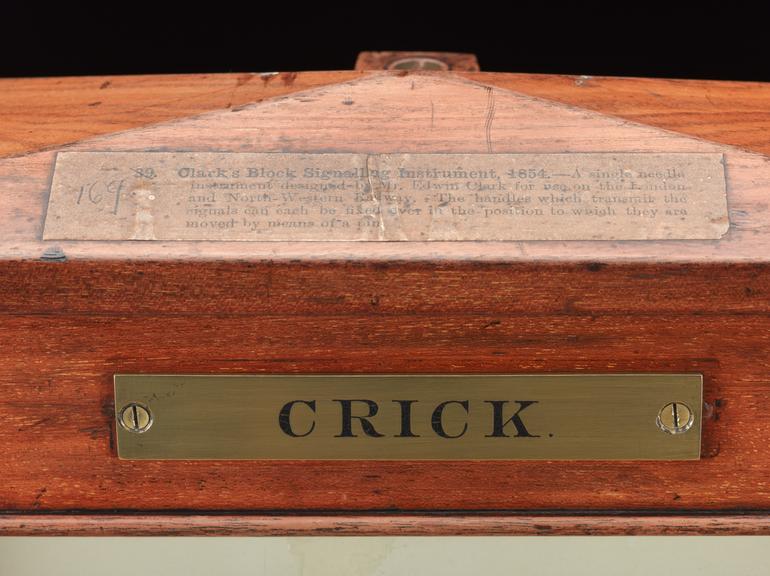
Clark's block signalling telegraph instrument, 1854
- maker:
- Electric Telegraph Company and Edwin Clark










Clark's block signalling telegraph instrument, invented by Edwin Clark, probably made by W T Henley's Telegraph Works Company for the Electric Telegraph Company, London, England, 1854. This type of instrument was used of the London and North Western Railway Line between London and Rugby from 1855
Clark's block signalling telegraph instrument, invented by Edwin Clark, probably made by W T Henley's Telegraph Works Company for the Electric Telegraph Company, London, England, 1854. This type of instrument was used of the London and North Western Railway Line between London and Rugby from 1855.
Edwin Clark was an engineer with the Electric Telegraph Company, which had been formed in order to make commercial use of Cooke and Wheatstone's telegraph patents. The Electric Telegraph Company was employed to provide telegraph equipment for railway signalling, including on the London and North Western Railway. Clark's aim when he invented this instrument was to design a telegraph that could be used for train signalling with the smallest chance of mistakes. The instrument ran on a continuous circuit, and showed either 'train on' or 'train off', meaning that either there was a train on the line or that it was clear. In the case of emergencies, the telegraph wire could be cut at the trackside, which would mean that the instrument received no signal, and therefore warned of danger. Clark's instruments were used between London and Rugby from 1855, and were placed every two-and-a-half miles. A parliamentary committee in February 1858 heard about the success of this instrument from the London and North Western Railway Director, who described the event that had occurred one evening when he was travelling: a bridge collapsed, and a nearby policeman was able to cut the wires and thus indicate to the instrument operators that there was a problem, meaning that two trains were halted before they encountered the remains of the bridge.
Details
- Category:
- Signalling & Telecommunications
- Object Number:
- 1912-5
- Materials:
- wood (unidentified), glass, brass (copper, zinc alloy), metal (unknown) and paint
- Measurements:
-
overall: 490 mm x 345 mm x 150 mm, 9.64 kg
- type:
- block instrument
- credit:
- Donated by H.M. Postmaster General




